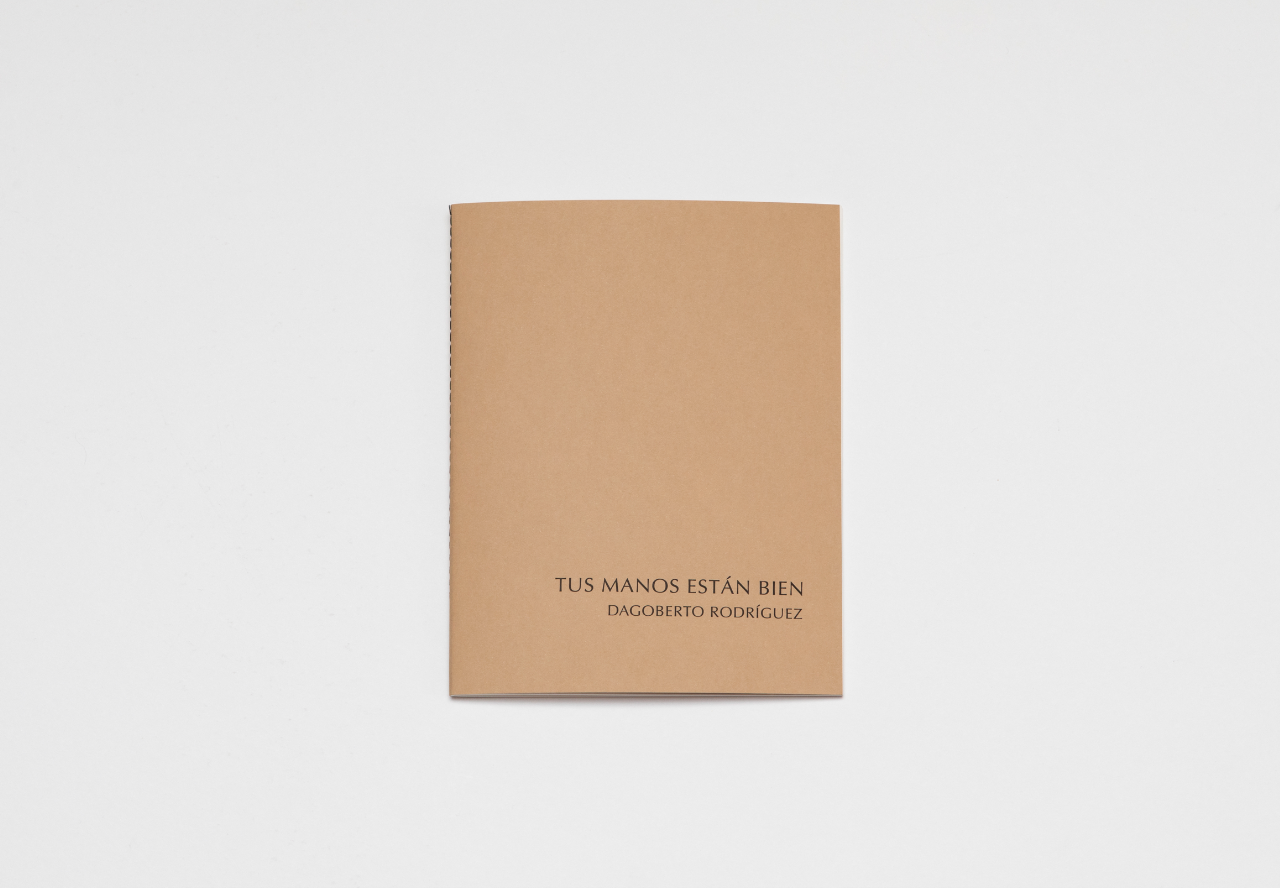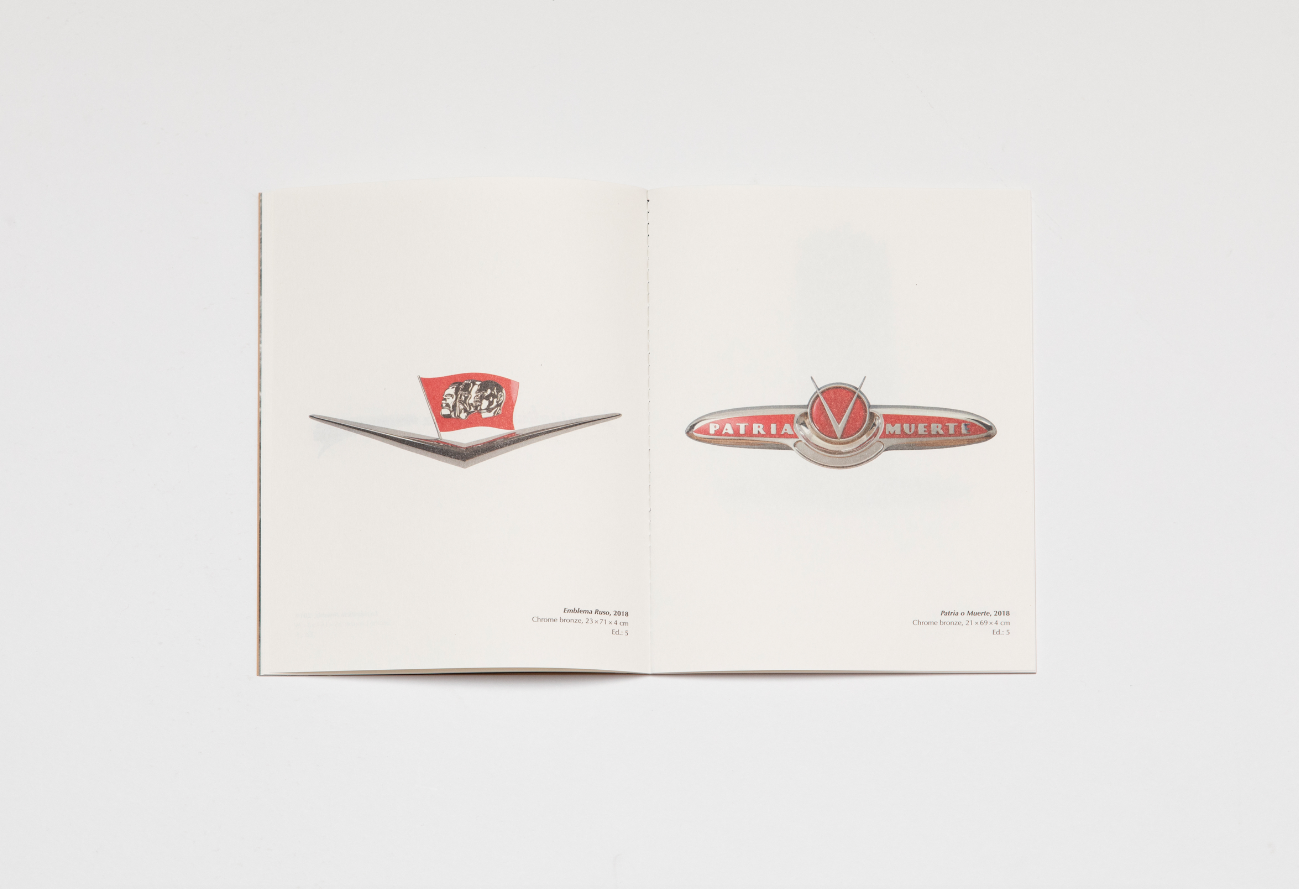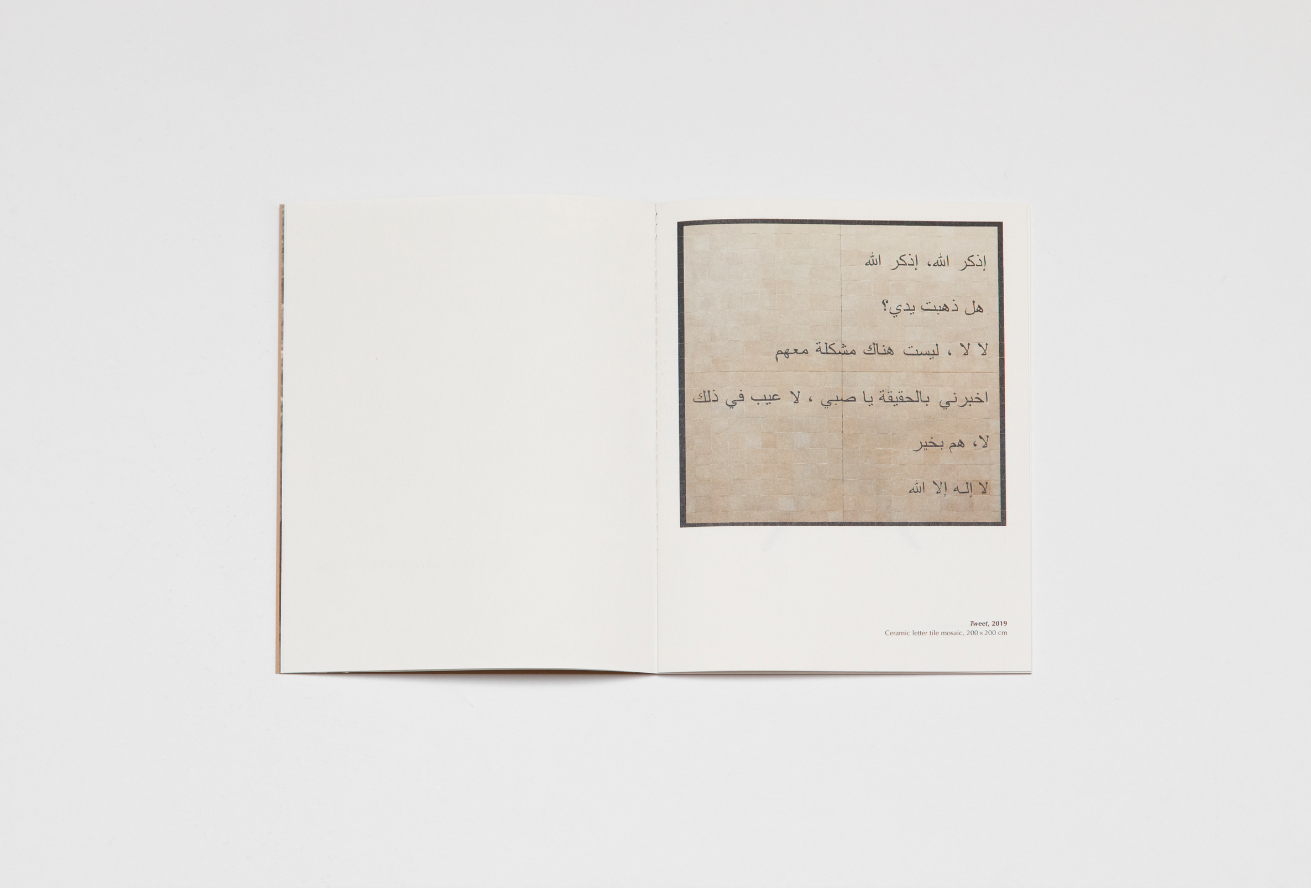Dagoberto Rodríguez. Tus manos están bien



Tus manos están bien, the first solo exhibition by Cuban artist Dagoberto Rodríguez, brings together a series of works that focus on the importance of the written word, delving into an exploration of language and rhetoric using three apparently unconnected political and cultural phenomena.
A video uploaded to Twitter by combatants in the Syrian war showed a horrific and extreme act of faith: the dialogue held between two missile operators in the moment when one of them has just lost his hands. The artist captures this moment in a mosaic mural made using an ancestral Arabic tiling artisan technique, thus establishing a subtle contrast between the speed and volatility with which writing spreads on digital platforms and the traditional technique of carving messages into stone. In the Emblemas series, Rodríguez combines hood ornaments from mid-twentieth-century North American cars, which symbolise capitalist development, with popular slogans and mottos spread during the Cuban revolution. In doing so, the artist synthesises the paradox that is precisely encapsulated in Cuba, where cars that represent the capitalistic development of the United States after World War II have been kept in use through sixty years of communism. In the Oraciones series, the artist removes reggaeton song lyrics from their context and places them in a completely different framework: etched into stones, in a mode reminiscent of memorials. The fact that, once removed from their context, many of the verses are scarcely distinguishable from political or even religious, discourse is very significant. On the other hand, the lyrics often also express underlying existential themes that reveal the fragility of marginal subjectivities and the human quest for transcendence.
Dagoberto Rodríguez Sánchez was born in 1969 in Caibarién, Las Villas, Cuba. In 1994, he graduated from the Instituto Superior de Arte (ISA) in Havana. In 1992, he co-founded the artist collective Los Carpinteros along with Marco Antonio Castillo Valdés and Alexandre Arrechea, who left the group in 2003. In 2018 they announced their split up. He currently lives and works in Madrid, and his practice combines architecture, design and sculpture. Los Carpinteros’ work has been exhibited in museums and cultural institutions around the world and in public and private collections, including the Galician Centre of Contemporary Art (CGAC) in Santiago de Compostela, Spain; the Extremaduran and Latin American Museum of Contemporary Art (MEIAC) in Badajoz, Spain; the Tate in London, UK; the Centre Georges Pompidou in Paris, France; the Museum of Modern Art (MoMA) in New York, USA, and the Daros Latinamerica Collection in Zurich, among others.
